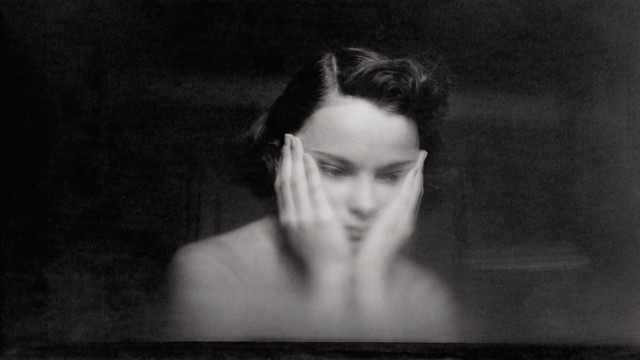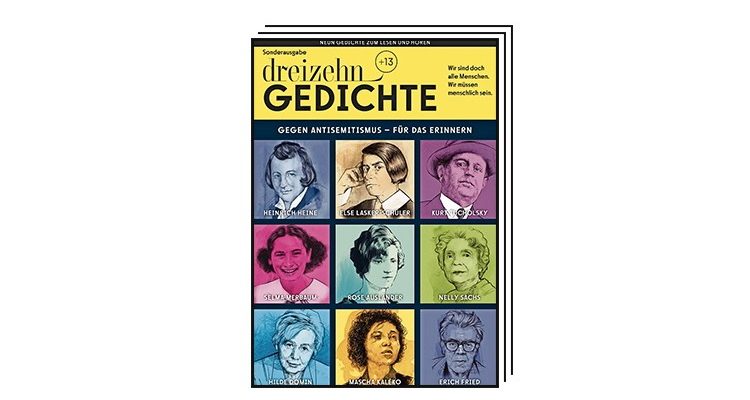Gifted poems: “Against anti-Semitism, for remembering”
Anyone who sends Christmas greetings by email and WhatsApp can attach a digital volume of poetry this year that will leave no one indifferent. A special edition of the “13 Poems” series was published this week, which can be found on the Websitethirteenplus13.de can download for free. Under the title “Against anti-Semitism, for remembering” editor Oliver Wurm and author Katharina Pütter have collected poems by Heinrich Heine, Else Lasker-Schuler, Kurt Tucholsky, Selma Merbaum, Rose Auslander, Nelly Sachs, Hilde Domin, Mascha Kaléko and Erich Fried supplemented with texts about the work and life story. Also suitable for New Year’s greetings, for example because of Hilde Domin’s poem “Who Could”. It goes like this: “Whoever could/throw up the world/so that the wind would pass through.” Laura Hertreiter
Theater: “Bucket List” at the Berlin Schaubühne
Yael Ronen has lost his sarcasm: scene from “Bucket List”.
(Photo: Ivan Kravtsov/Schaubühne Berlin)
Yael Ronen started rehearsals for her new piece at the Berlin Schaubühne shortly after October 7th, and it shows in the production. It is an attempt to come to terms with trauma together using artistic means, with beguiling singing and ravishingly beautiful – sometimes perhaps even a little too beautifully reveling in comforting harmonies – music by Shlomi Shaban, the Israeli Leonard Cohen. Ronen has lost the biting sarcasm of her productions at the Maxim Gorki Theater when she returns to the Schaubühne. In the hour-long evening between theater and musical, Ruth Rosenfeld, Damian Rebgetz, Carolin Haupt and Moritz Gottwald ask themselves how life goes on when the familiar world is being devastated. All that remains of the old certainties are “garbage heaps,” “I wake up among the ruins of my former reality.” If theater can heal, then this is it. Peter Laudenbach
Film: “Chicken Run”

This time the chickens are on a chick rescue mission.
(Photo: Aardman/Netflix)
In this agent mission, creative pragmatism decides. A thread cutter becomes a universal key, knitting needles become samurai swords and a clothes hanger and clothesline become a zip line for escape. The command: a determined bunch of chickens, armed to the not-so-proverbial teeth with household goods.
Of course, real poultry don’t have teeth, but the heroes of the film “Chicken Run” got them for free from their inventors at the British animation studio Aardman. After 23 years, they finally send their successful chickens on a new adventure: In the first part, they fled from a fattening farm to freedom, in the style of Steve McQueen in “Breaking Chains”. In the sequel, “Chicken Run: Operation Nugget,” a brash chick wanders into a fast food factory and the family must embark on a “Mission Impossible.”
The chickens have the toothy grin in common with their colleagues from the other Aardman films, especially “Shaun the Sheep” and “Wallace & Gromit”. With the traditionally hand-made worlds made of plasticine and tongue-in-cheek film references, the studio bravely defies the CGI age. The claymation animations have a solid fan base, which was quite abuzz at the end of November. The news of the demise of the dough manufacturer Newclay, home and farm supplier to Aardman, dampened the anticipation for part two of the chicken adventure. Apparently the dough supplies were only enough for one last film, according to the report. And now?
Luckily, Aardman’s playdough worlds are populated by inventors, craftsmen and hobbyists who use their MacGyver skills to make the best of everything. That’s why the chickens not only wear hats they knit themselves, but also scout backpacks full of solutions for every situation. The studio has also taken precautions: the storage rooms are still filled with dough and the laboratory is active. Like the inventors of the films, the in-house inventors are also hard-working, the studio assured. Experiments with new materials are underway and production for the next few years is secured – and of course the chicken smile with an overbite. Sofia Glasl
Photography: “The Big Retrospective” by Saul Leiter

Before he traveled through New York with his camera, Saul Leiter painted small-format watercolors for decades.
(Photo: 2023 Saul Leiter Foundation)
A great invisible figure in photographic art in the 20th century is Saul Leiter. He took photographs every day for 60 years, but hardly anyone saw his 40,000 slides and 20,000 prints during his lifetime, because that’s exactly what Leiter wanted: invisibility. “I was lucky to have achieved my goal of being unsuccessful,” he said in one of his rare interviews near the end of his life. This makes Leiter one of the rare breed of photographers who pursue the most ambitious artistic goals without wanting anything for themselves.
How unique his photographs are can now be seen in the beautiful illustrated book “The Great Retrospective” from Heidelberg Kehrer Verlag. It was published on the occasion of his 100th birthday (December 3, 1923) and of course also shows some of his now legendary color photos from New York in the 1950s. These shots transcend the plain realism of street photos to the level of art, which is not at all surprising: Leiter painted small-format watercolors for decades and transferred the delicate coloring of his paintings into the world of photography. A red umbrella on a gray street, the glow of a yellow lamp reflected on a window, the green light of a traffic light in the middle of a drift of snow: Leiter’s use of color is so reduced that the photos, which were taken in the hectic world of New York, an almost reverent silence emanates. At the same time, Leiter is a master of visual compositions: here a person cut out by the dark shadow of an awning, there the reflection of a woman in a shop window, and finally his magnificent silhouettes of people outside, taken in front of a pane inside, fogged up by the heat like in a shower is. These are masterful photos that seem to transfer the pictorialist photography of Heinrich Kühn into modern New York.
Leiter’s work was discovered very late and is still being accessed today (including his extremely delicate nude photos, some of which are presented in the new volume). But even when fame came, he always stayed in his neighborhood in New York. That’s actually the most amazing thing about this amazing artist: that he walked the same streets for decades in all their ridiculous mundanity and discovered so many wonderful things along the way. According to his credo: “I am a romantic, not a realist. I look at the most unimportant things and find the beauty in them.” Marc Hoch
Classical music: 525 years of the Vienna Boys’ Choir

A teaching stream in Western music history.
(Photo: Decca)
Larger and smaller treasures can be found in this anniversary box “525 Years of the Vienna Boys’ Choir”, such as the motet “O Domine” by Josquin des Prez under the direction of the current choir director Gerald Wirth or a multi-generational Mozart CD with Ferdinand Grossmann, Hans Gillesberger – conductor of the legendary recording of Bach’s St. John Passion, now known as Harnoncourt – and Peter Marschik. In addition to rarities from the Renaissance and early Baroque, there are also some from Mozart’s environment to discover: works by Salieri, Eybler, Herbeck and of course: Michael Haydn, Joseph Haydn’s big little brother. This box set is a vivid, enlightening, inspiring textbook of Western music history, with a fantastic choir and great soloists throughout. Helmut Mauro

